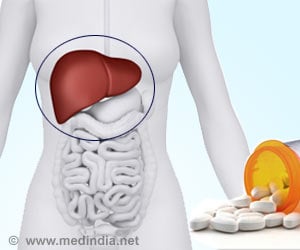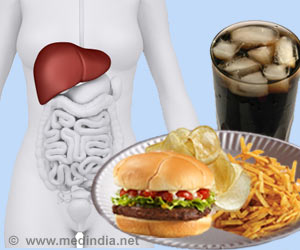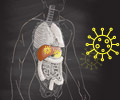Results from three Phase III clinical trials (ION-1, ION-2 and ION-3) have been presented at the International Liver CongressTM 2014.

"The results of the ION studies demonstrated highly satisfactory cure rates with a fixed dose combination of sofosbuvir/ledipasvir among patients with genotype 1 HCV infection without the use of either injectable interferon, which causes miserable flu-like symptoms, or ribavirin, an antiviral pill associated with a variety of troublesome side effects, including anaemia and rash," Professor Peck-Radosavljevic continued. "As a result of this marked improvement in tolerability, many more people are likely to seek treatment with this ribavirin-free regimen, which involves just one pill once a day."
Across the three ION studies, 1,952 patients with genotype 1 HCV infection were randomised to receive LDV/SOF with or without RBV for eight, 12 or 24 weeks of therapy. Of these, 1,512 patients were treatment-naïve, 440 were treatment experienced and 224 had compensated cirrhosis.
Of the 1,952 patients randomised in ION-1, ION-2 and ION-3, 1,886 patients (96.6%) achieved the primary efficacy endpoint of SVR12. Of the 66 patients (3.4%) who failed to achieve SVR12, 38 patients (1.9%) experienced virological failure: 36 due to relapse and two patients due to on-treatment breakthrough (with documented non-compliance). 28 patients (1.4%) were lost to follow-up.
Fewer adverse events were observed in the RBV-free, fixed-dose combination arms compared to the RBV-containing arms in all the ION studies. Adverse events observed in those taking LDV/SOF were generally mild and included fatigue and headache. In the RBV-containing arms of the ION studies, the most common adverse events were fatigue, headache, nausea and insomnia. Anaemia, which is a common side effect associated with RBV, was reported in 0.5% of patients in the LDV/SOF arms versus 9.2% of patients in the RBV-containing arms. Less than 1% of patients in the studies discontinued treatment due to treatment-emergent adverse events.
Genotype 1 is the most common, but hardest to treat, strain of the hepatitis C virus. Sofosbuvir belongs to a class of directly acting anti-viral (DAA) drugs known as nucleotide analogue polymerase inhibitors, which are designed to block an enzyme the hepatitis C virus needs to copy itself. Ledipasvir belongs to a promising new class of DAA drugs that work by blocking the NS5A protein, which the hepatitis C virus also needs to replicate.
Advertisement
ION-2 STUDY[i]
- The ION-2 study evaluated 440 treatment-experienced genotype 1 HCV patients, including 88 with compensated cirrhosis, who had failed past therapy with regimens containing Peg-IFN (including Peg-IFN plus a protease inhibitor)
- Patients received LDV/SOF with or without RBV for 12 or 24 weeks
- After 12 weeks of therapy, SVR-12 was 96.4% and 93.6% for SOF+LDV+RBV and SOF+LDV
- After 24 weeks of therapy, SVR-12 was 99.1% and 99.1% for SOF+LDV+RBV and SOF+LDV
- One patient experienced on-treatment virological failure
- No patients discontinued treatment due to an adverse event
- Nine patients (2%) had treatment-emergent SAEs
- Haemoglobin <10 g/dL occurred in 5% of patients taking LDV/SOF+RBV, and no patients taking LDV/SOF
Advertisement
- The ION-1 study looked at 865 previously untreated patients, including 136 with cirrhosis
- Patients received LDV/SOF with or without RBV for 12 or 24 weeks
- After 12 weeks of therapy, SVR-12 was 97.2% and 98.6% for SOF+LDV+RBV and SOF+LDV
- After 24 weeks of therapy, SVR-12 was 99.1% and 97.7% for SOF+LDV+RBV and SOF+LDV
- The most frequent AEs reported for LDV/SOF were headache (25%), fatigue (23%), and nausea (12%)
- 33 patients (4%) had treatment-emergent SAEs
- No patients receiving 12-Weeks of treatment and 10 patients receiving 24-Weeks of treatment discontinued therapy due to an AE
- Haemoglobin <10 g/dL occurred in 8% of patients taking LDV/SOF+RBV and no patients taking LDV/SOF
ION-1 STUDY - Patient reported outcomes[iii]
- Patient reported outcomes (PRO) were evaluated using: Chronic Liver Disease Questionnaire-HCV (CLDQ-HCV), Short Form-36 (SF-36), Functional Assessment of Chronic Illness Therapy-Fatigue (FACIT-F), and Work Productivity and Activity Index: Specific Health Problem (WPAI: SHP)
- Throughout treatment, some of the PRO scores, especially those related to fatigue, activity and work productivity, were superior for RBV-free regimen (by up to 13.1%; p-values ≤0.5 to < 0.0001)
- During treatment with the RBV-containing regimen, significant decrements in PROs were noted from baseline scores (up to -8.1%, p< 0.0001)
- In contrast, most of PROs for the RBV-free regimens improved (up to +6.1%, p< 0.0001). This improvement was noted as early as treatment week 2, and maximised by end of treatment
- Regardless of the regimen, patients who achieved SVR-12 showed significant improvement of PROs (+3.1% to +9.6%, p=0.045 to < 0.001)
ION-3 STUDY[iv]
- In ION-3, 647 previously untreated patients without cirrhosis received LDV/SOF with or without RBV for 8 weeks or without RBV for 12 weeks
- 94% achieved SVR-12 after just eight weeks of treatment with LDV/SOF, rising to 95.4% with a 12-week regimen of LDV SOF.
- There were no virological failures during treatment
- Treatment was well tolerated: three patients discontinued due to adverse events
- 10 patients had SAEs: none were related to treatment
- Haemoglobin <10 g/dL occurred in 5% of patients receiving LDV/SOF+RBV and in a single patient who received LDV/SOF
Source-Eurekalert











